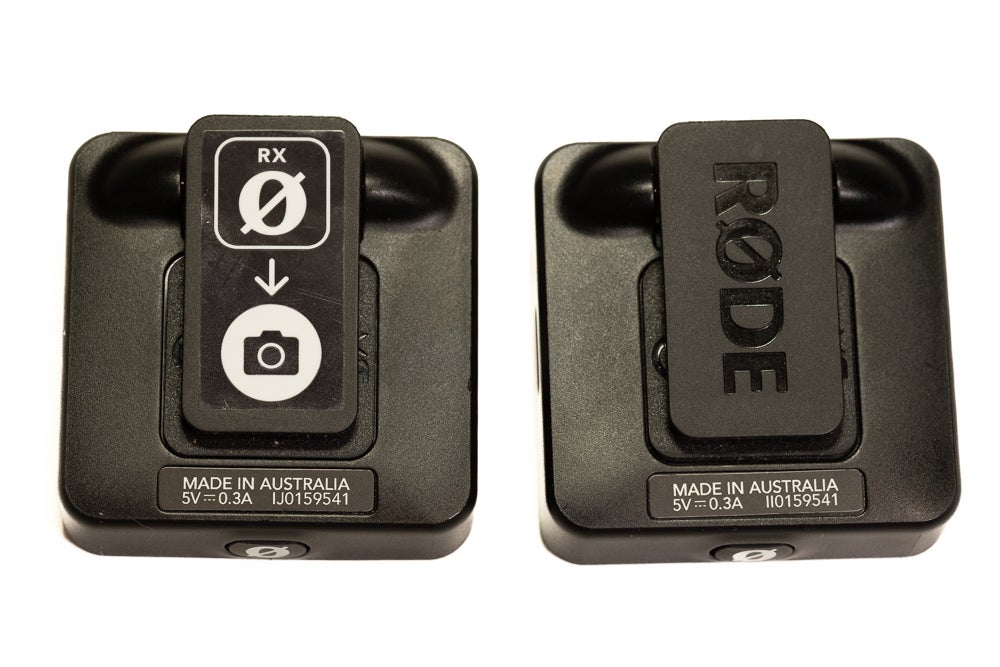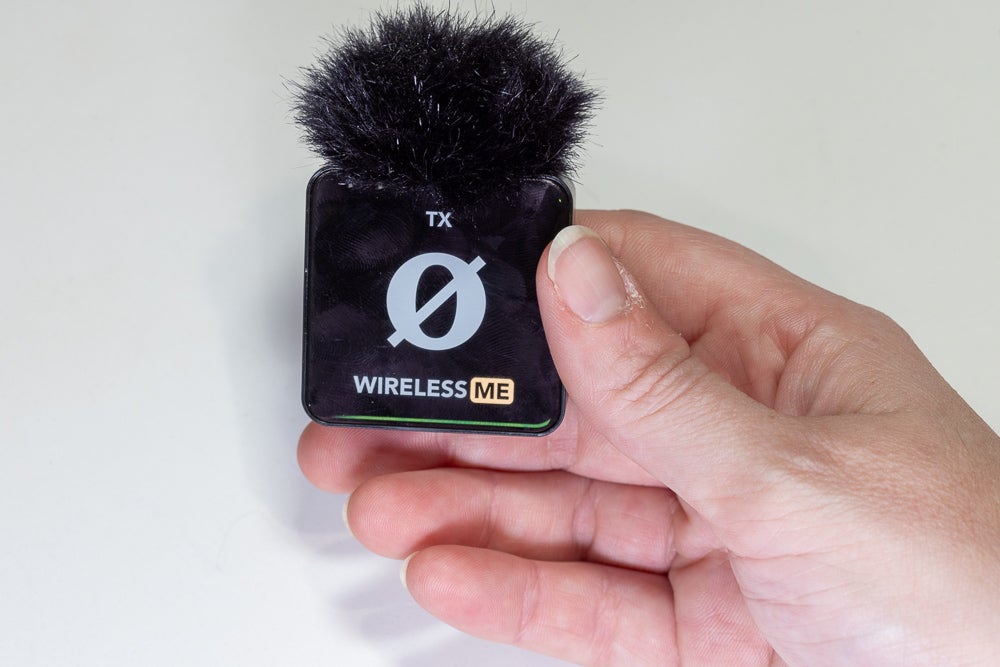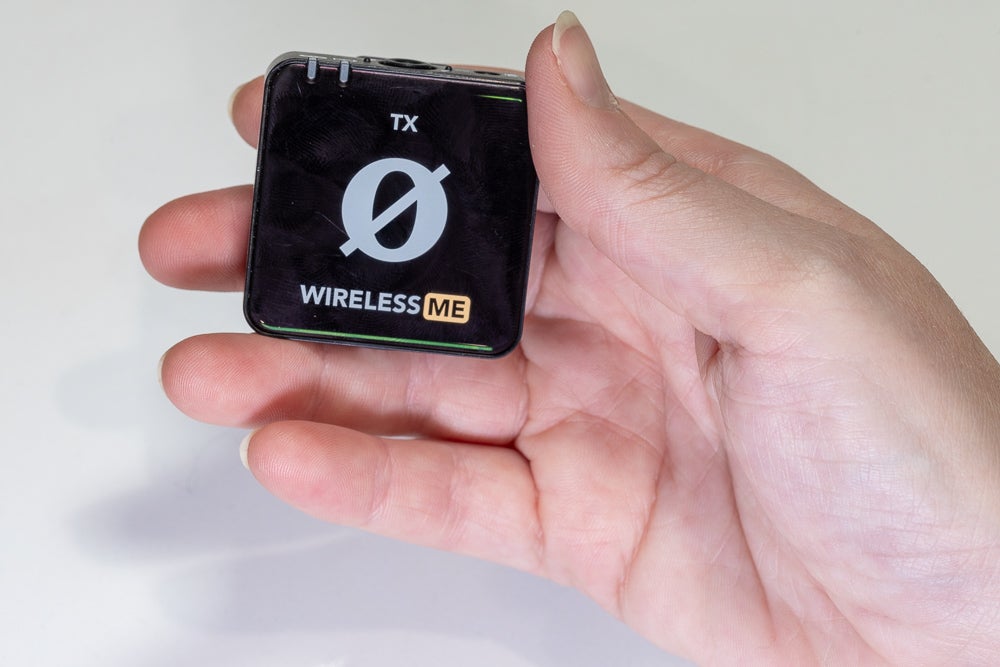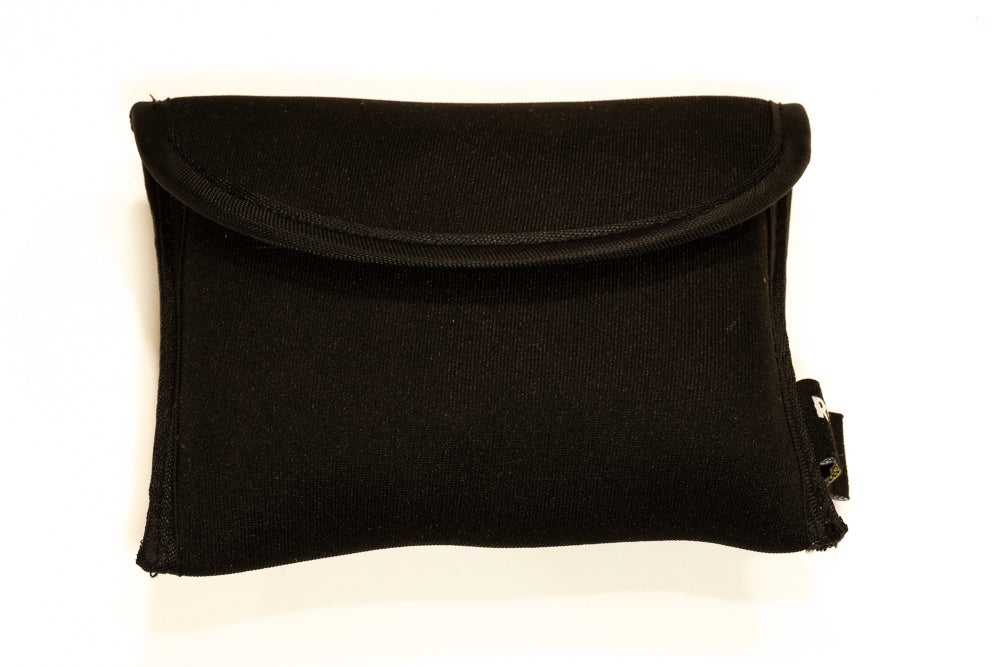
Most content creators start with a smartphone and a dream. Whether you were in the trenches of Vine or found your voice on TikTok, having a production studio in your pocket opens doors. However, eventually, serious creators will need to step up their game, especially with sound. When you’re ready, the Rode Wireless ME deserves serious consideration for your first mic.
Rode has been a leader in microphone technology since the 1960s, and its Wireless ME is a rare mix of affordability and features. You might think that something so cheap is just for the occasional TikTok. But this is a full-featured mic with a few tricks its more expensive counterparts lack.
What Is the Rode Wireless ME, and Who Is It For?
The Rode Wireless ME is a two-piece rechargeable wireless microphone system. It has a receiver (RX) mic, a combination transmitter (TX) and mic, USB-C cables, 3.5mm TRS cables, and a USB-C to lightning connection for iPhones. Finally, it comes with a soft carrying case and windshields for each mic.
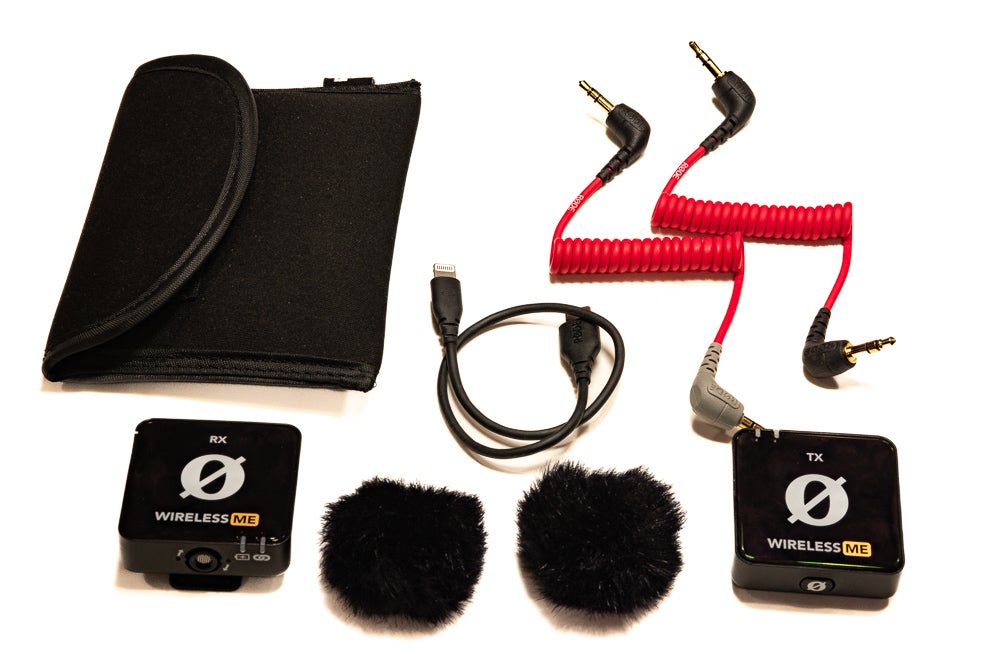
With everything inside the carrying case, the Rode Wireless ME is the size of a thin wallet. This compact form makes it perfect for creators who are on the go and don’t want to carry bulky equipment. While its design and simplicity have TikTok creators in mind, other creators should take note.
Whether you’re filming skits, live speeches, interviews with a subject, or short films, the Rode Wireless ME’s crystal clear sound and simplicity are compelling. Couple its features with an unbeatable price, and Rode has delivered an excellent first mic for creators looking to improve their work.
Rode Wireless ME Specs
Acoustic Principle: Pre-polarised pressure transducer
Polar Pattern: Omnidirectional
Frequency Range: 20 Hz – 20 kHz
Dynamic Range: 100dB
Max SPL: 122dB SPL
Equivalent Noise (dBA): 22dBA
Analog Inputs: TRS (lavalier microphone Input)
Output Connection: 3.5mm TRS, USB-C
Computer Connectivity: USB-C
Bit Depth: 24-bit
Sample Rate: 48 kHz
Minimum Operating Systems Requirements: macOS 10.15 or above, Windows 10 and above, iOS 14, Android 11
Battery: In-built rechargeable lithium-ion battery charged via 5V USB
Operating Time: 7 hours on a full charge
Transmission Range: 100m
Weight: Each mic is 35 grams
Size: 44mm x 45.3mm x 18.3mm
What Is Great About the Rode Wireless Me?
1) The Rode Wireless ME Is Incredibly Affordable
The Rode Wireless ME’s price is a conversation starter right off the bat. This unit starts at $149 from the manufacturer. If you have a credit card from a retailer like Amazon, you could get this full-featured wonder for just $24.83/mo for six months.
By comparison, Rode’s next-level wireless mic, the Wireless GO II, starts at $299. Having used both mics in field settings, the Wireless ME gives the GO II a bit of competition. Granted, the GO II has a few features that the Wireless ME does not.
However, the Wireless ME’s incredible range, clear sound, and battery life make its price all the more impressive. We’re a little stunned by how affordable and powerful this mic system is.
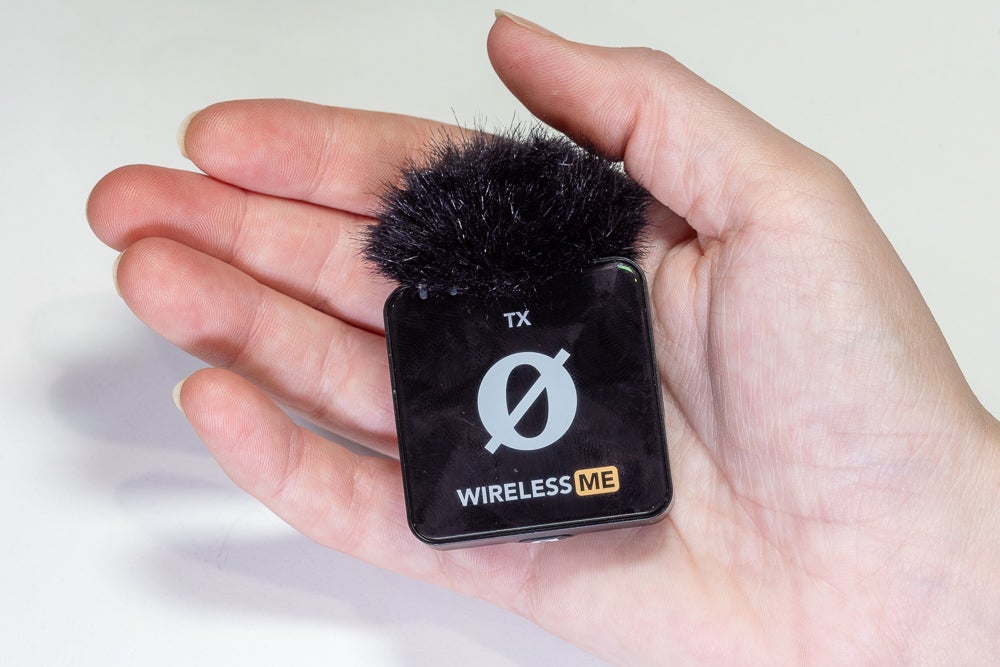
2) Rode Wireless ME’s Gain Assist Makes Run and Gun Filming A Breeze
Lav mics get clipped to people. Sadly, people are mostly jelly, bones, liquid, and clothes. That means they move around a lot. That can mean uneven sound in a recording setting as the mic moves closer and farther from your subject’s mouth. The amplification of your microphone’s signal output is called the Gain.
On a regular mic, this is something you’ll need to adjust and monitor manually. The Wireless ME, on the other hand, comes with an incredible feature called Gain Assist. Using Gain Assist, the mic will automatically adjust your mic’s levels as you record.
Gain assist is handy when recording with moving subjects or while you’re on the go. However, our favorite use case for Gain Assist is with people who struggle to regulate their volume. With Gain Assist on the Wireless ME, it helps keep your levels from peaking when your subject’s volume suddenly spikes.
Most importantly, this feature can help provide peace of mind to creators who aren’t monitoring their mics in real time. It’s like having an intelligent little assistant with you as you shoot.
By the Way, What Is the Best Rode Mic BD Setting?
We’ve seen people ask this question frequently. In many ways, it reflects how easy it is on the internet to get “almost” correct information. In this case, bd is a typo many people are making. There is no bd setting; it’s dB, which stands for decibels. Still, several thousand people a month search for the best Rode Mic bd Setting.
If that’s you, Gain Assist was built for you. Every creator should study the art of setting proper sound levels, but you most likely don’t have time before a shoot.
3) Rode Wireless ME Is Two Mics and a Receiver in Just Two Simple Pieces
With a traditional wireless mic, you usually have a microphone and a receiver. The microphone gets put on your subject, and the receiver is plugged into your recording device. Rode Wireless ME comes with a mic built into the receiver itself. If it is plugged into your camera for an interview, you can ask your subject questions directly into the receiver mic.
There are wireless mic setups that come with a receiver and two mics. But we appreciate the versatility and compactness that comes with this setup. This feature is handy for interviewers, even if you’re just recording reference audio of your questions.
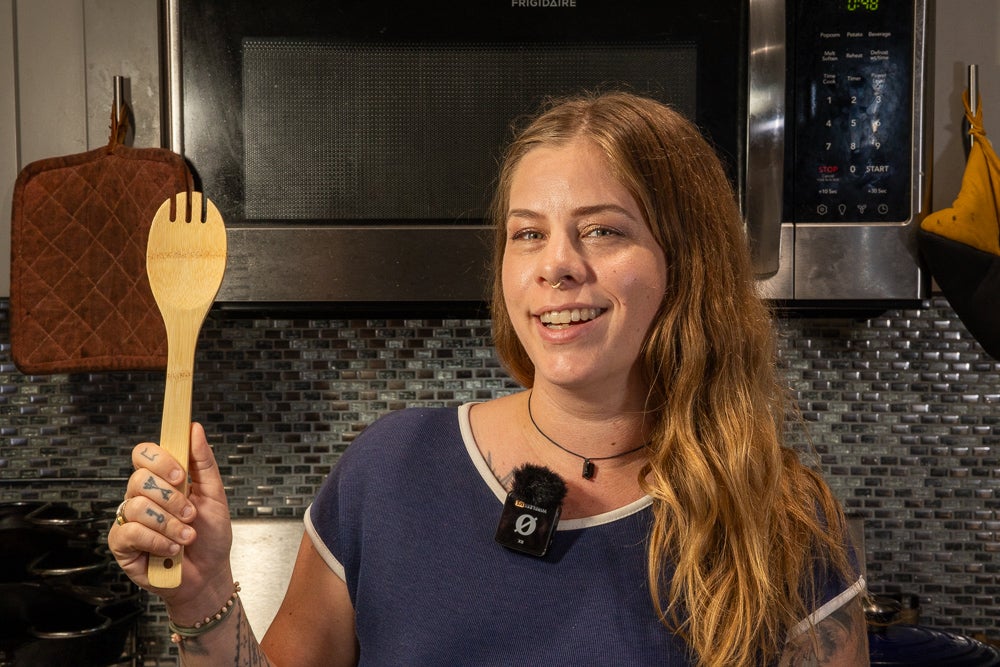
4) Easily Works With Phones, Cameras, and More Right Out of the Box
Outside of Gain Assist, the best feature of this microphone setup is how easy it is to use. Whether you’re plugging it into a camera or a smartphone, thanks to Rode’s incredible apps. In particular, the Capture app makes smartphone setup take just a few seconds. The slowest part was downloading the app from the Apple Store.
5) Simply Multi-Device Support
Are you still shooting with an older device? No worries. The Wireless ME is a multi-device system that can be used with analog audio output or digital output cameras.
6) Optional Lav Mic Connection
Don’t want a black box in your video hanging off your subject’s lapel or simply need a more consistently placed mic? The Wireless ME’s Receiver (RX) mic has a Lav mic connection to simplify subtler recording.
7) 100 Meter Range
Thanks to its Series IV 2.4 GHz digital transmission, the Wireless ME can transmit audio from its receiver to the transmitter from up to 100 meters away. This also opens up possibilities for shooting short films or live speaking engagements across a busy room.
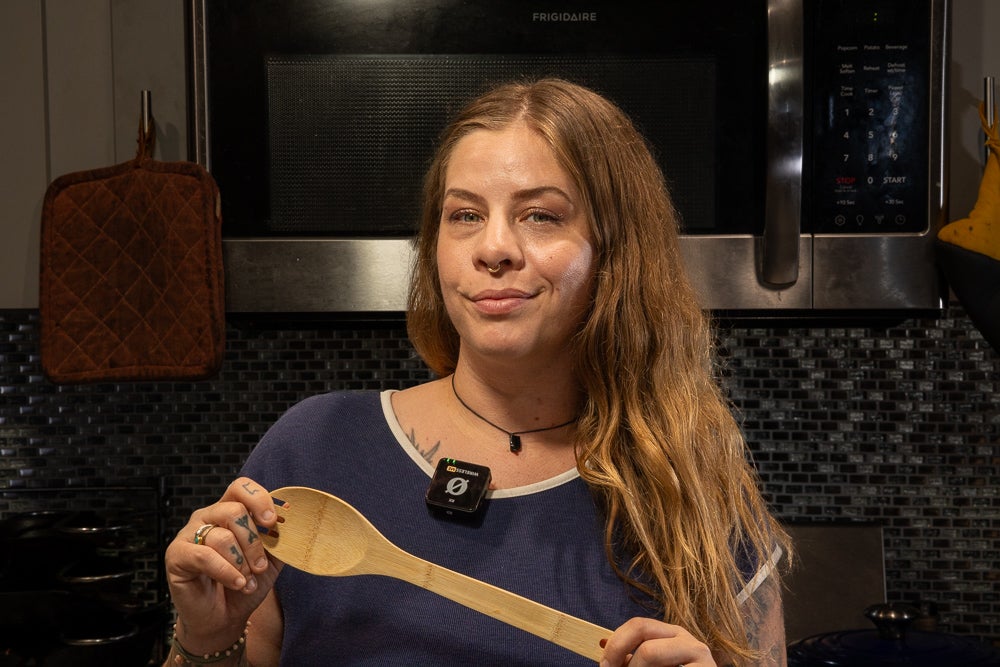
8) Rode Apps Make Learning and Using The Wireless ME Simple
Part of the ease of creating with the Wireless ME is Rode’s handy app ecosystem. Its Capture, Connect, and Reporter apps are intuitive to learn and come with simple explainers for walking you through the first steps. Whether using a camera, smartphone, or computer, you’ll never feel alone when learning to use the Wireless ME.
Capture, in particular, is great for creators. It offers in-app control of your microphone while shooting video and even has a dual-camera recording mode. That way you can simultaneously record out of the front and back cameras on your phone. When you need to shoot two people with one phone for a podcast interview, Capture makes it simple.
9) Small Size Makes It Easy To Take Out Every Day
They say the best piece of gear is the one you’ll actually take with you. A bulky, heavy microphone system isn’t going to become a part of your everyday carry. With the Wireless ME, making room for the system isn’t a problem. Even when fully packed into its soft case, this system only takes up the space of a small wallet.
It easily fits into your backpack, fanny pack, back pocket, back pocket, camera bag, or any other sack you’ve got handy. By being something you can always have on you, you may find yourself creating with the Wireless ME, even if that wasn’t your intention to leave the house.
Where does the Rode Wireless ME need work?
1) Learning Gain Assist Mode Can Be Confusing If You’re New To Wireless Mics
Even the best systems take time to learn, particularly if you’re new to using them. We adore that the Gain Assist mode includes both “Dynamic” and “Automatic” options. However, the differences between these two options could be clearer in Rode’s documentation.
We recommend always using the “Dynamic” option. In our testing, we found it offered the best recording quality. Yes, the Wireless ME works great out of the box. However, we don’t recommend using it for an essential project until you’ve taken the time to learn how it works. You don’t want a simple misunderstanding to ruin good footage.

2) No Native Audio Input Control On Mac OS Computers
Occasionally, Mac users find themselves on the short end of the technology stick, and the Wireless ME is one such case. If you attach this to your Mac to record, you’ll find no native input control even when the mic is recognized.
You can improve the audio input levels in the Rode Control app, but it isn’t perfect. However, this issue was resolved when we turned on Dynamic Gain Assist. Still, if you’re looking to dial in your settings on a Mac, the lack of control will bother you.
3) No Charging Case
We’re living in a golden era of cheap wireless mics that come in handy charging cases, so we were surprised to discover that the Wireless ME system doesn’t have one. Ultimately, this isn’t a deal breaker. After all, the system’s compact portability would fall apart if it had a bulky charging case. Just make sure you remember to charge both units before the day of filming. Thankfully, the Wireless ME unites charge quickly via USB-C.
4) Lack of On Mic Buttons Means You Have To Make Changes Via the App
You cannot manually adjust the gain or any other settings on the Wireless ME units. Rather, you’ll need to use its apps. Again, this is a minor complaint. However, it can be annoying when shooting to always need your phone on you.
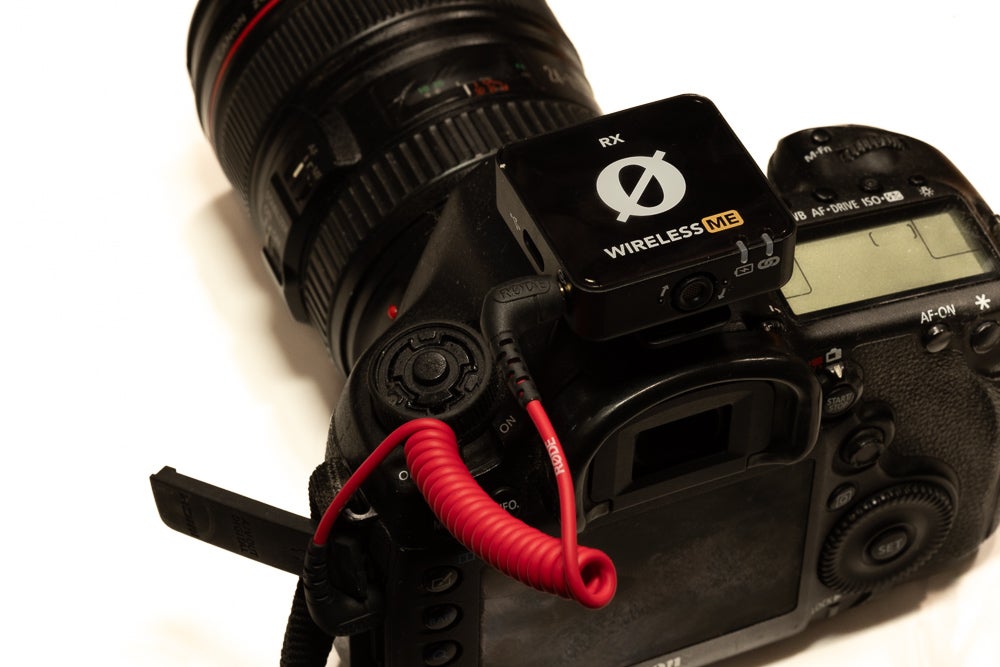
What Kind of Creator Is the Rode Wireless ME Best For?
With its $149 price tag, the Rode Wireless ME makes a compelling argument for being the first wireless microphone set creators should buy. Cheaper wired lav mic options can continue to service creators on a budget. But most good, yet cheap, wireless mic systems already start at $50-90.
$149 isn’t inexpensive, but it’s an affordable price point. Get an Amazon card, and pay it off in six months for $25 a month. That’s within reach of anyone. We hate buzz phrases like “crystal clear audio” as much as anyone, but that’s what this device delivers. Whether shooting in the park, in an apartment, in the car, or walking around, the Wireless ME delivered.
If you’re shooting a movie and want a wireless mic, we recommend the Wireless GO II. Its advanced features are better suited for professional work on set, but it’s much more expensive. The Wireless ME is perfect for small creators looking for clear, consistent, professional sound.
More importantly, this system is compact. It’s compact in a way that makes it easy to bring with you, just in case. Often, as creators, particularly mobile creators, we have to make stuff when and where inspiration finds us. With a kit this small, you’ll always be ready to record incredible sound.
Should Creators Buy The Rode Wireless ME?
The Rode Wireless ME comes highly recommended. We understand that $149 is an investment. But so is every second you spend trying to work around frustrating audio issues. Invest in your content and your own time. Sometimes you need to spend money now so you don’t waste time later.

